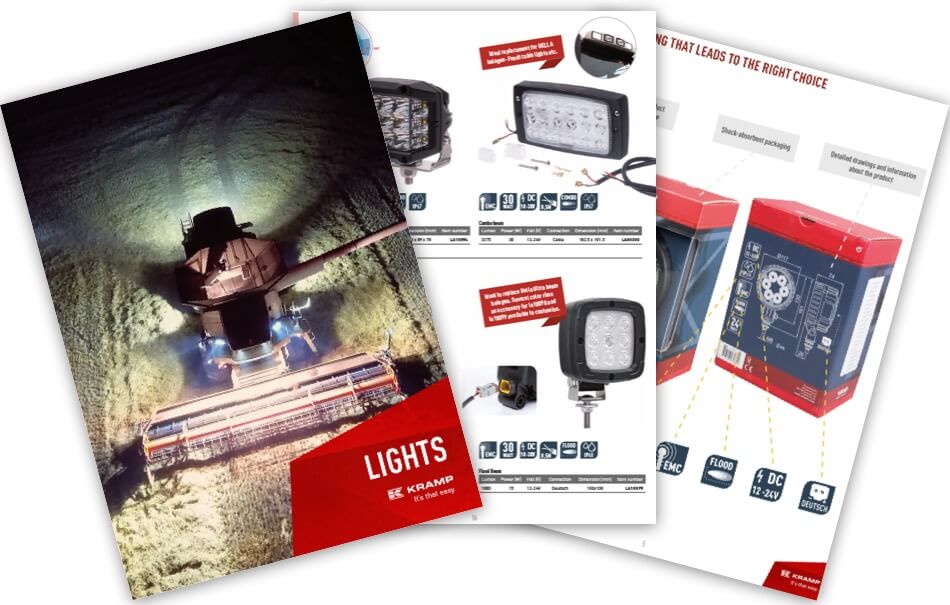Get more out of your work day with the right LED lighting
When you have the right LED lighting on your vehicle or machine, your working day only ends when you’re ready to finish. You can work longer and more comfortably in the dark and get more out of your working day. The right lighting also gives you reassuring safety in the field and on the road.
We have prepared five questions that you can ask yourself when buying LED lighting for vehicles. To find out more about all the vehicle lighting we sell at Kramp, download our PDF: Kramp vehicle lighting.
Question 1: Where do I want the light image?
It is important to know in advance where you want the light image. Is that far away, close by, or both? Where you need the light image depends on the kind of work you do. The terms ’spot’, ;flood; and ;combo’ indicate the beam angle of a lamp's beam. The spot (spotlight) gives a narrow beam over a relatively large distance. The flood (wide beam) gives a wide beam for close by, for example for a good view of the field or tool. The more lumen the lamp has, the larger the light image and so the better illuminated the surface becomes as a result. The combo is a beam that combines both, with the centre of the light beam providing a relatively distant view.
Question 2: How much space do I have on my vehicle?
Before buying new LED lighting for a vehicle, it is important to see how much space there is left on the vehicle and whether you have enough room to mount the lamp. Establishing the light’s physical dimensions is an obvious but often overlooked step.
An important question is: Where do I find the dimensions of the lamp I'm about to buy? These dimensions are always listed on the Kramp webshop, and are also detailed on the product packaging.
Question 3: To what extent should the lamp be able to withstand moisture?
Does the lamp need to perform in wet conditions, whether it’s working outside in the rain or withstanding the volume and high pressure of water from a pressure cleaner? Checking water resistance is an essential part of choosing the right work light. The extent to which the lamp is resistant to moisture is indicated by the IP value. IP value stands for 'Ingress Protection' and is a universal standard which indicates the level of protection for the intrusion of solid objects and liquids into electrical equipment. Learn more about IP values in our article: What is an IP value and what does it mean for my LED light?
Question 4: Do I want a lamp with a cable or with a Deutsch plug?
Another important consideration when buying new work lights is the decision between a lamp with a cable or a lamp with a Deutsch plug. The Deutsch plug is becoming increasingly popular. But what kind of a plug is it and how does it work? A Deutsch plug gives a solid and watertight connection between the lamp and power source. Does the worklight have a Deutsch plug? Then choose a matching cable with Deutsch contra plug. These come in different lengths. The big advantage is that you can lead the cable in and make a connection to the power source in a better place, where humidity and conditions do not affect the quality of the connection. Working lights are usually 2-pin models, but with multifunctional headlights they are also found as 6-pin models.
Question 5: How many lumens do I need?
Some tractors and other vehicles still have older work lights. These are going to be replaced by LED lights. Because nowadays the power of a lamp is often expressed in lumen instead of watts, it is useful to know exactly how many lumen you need for your work lamp to perform as well as you need. You’ll find all the information you need in our article: How to convert watts to lumens.
Are you looking for more information about work lights and the variety of lamps available? Download the 'Kramp vehicle lighting' guide and learn more about the vehicle lighting available at Kramp.


